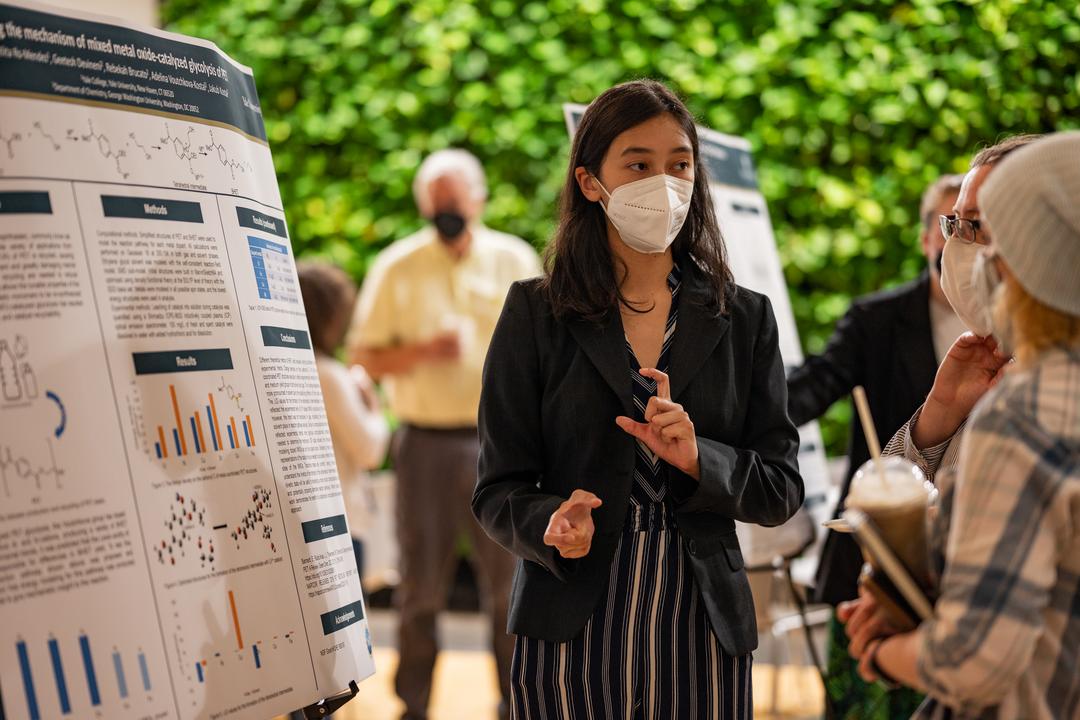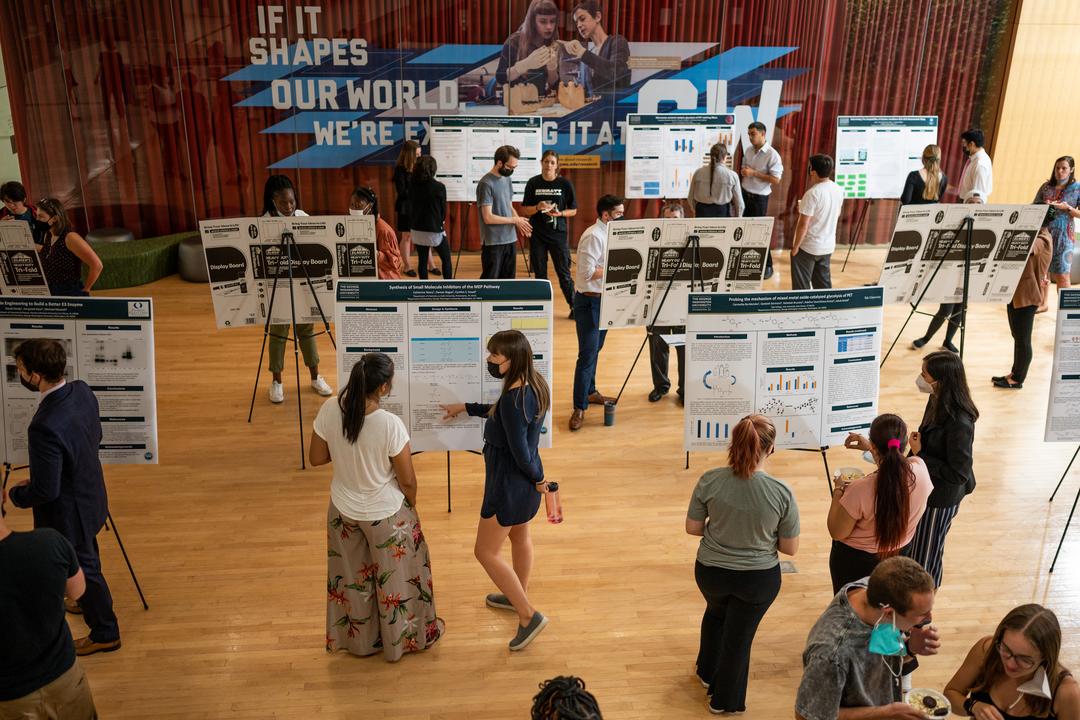By Kristen Mitchell
Undergraduate students from around the country had the opportunity to learn at George Washington University this summer, exploring the integration of green chemistry and science policy alongside faculty from the Columbian College of Arts and Sciences Department of Chemistry.
The department received support from the National Science Foundation (NSF) to launch a 10-week Research Experiences for Undergraduates (REU) program, which supports active participation in science research by undergraduate students. The 12 undergraduate participants in GW’s 2022 program explored the union of policy and green chemistry, the design of chemical products and processes that reduce or eliminate the use or development of hazardous substances, through independent research, workshops and more.
“The intersection of science and technology with policy is a very critical and rich space, but the average science student doesn't get exposure to that until late in their career, and they have to make a conscientious effort to get there,” said Christopher Cahill, professor of chemistry and international affairs and chair of the chemistry department. “What we're trying to do is cultivate an awareness sooner and to sort of enlighten folks to keep abreast of policy developments and see how policy can impact their scientific pursuits.”
REU programs are focused on developing the next generation of graduate students and upper division scientists, and are geared toward exposing students to tailored expertise and learning opportunities that may not be available at their home institutions, said Stephen Boyes, associate professor of chemistry and director of GW’s REU program. GW received funding to support its REU program for three years. More than 215 students applied to join the first cohort this summer.
“One of the goals we have for them is to give them that type of experience so they can make decisions about their future careers and what they might do, and improve their understanding of science as a whole,” Boyes said. “Often students get siloed into their classes and take a particular class each semester without seeing the broader impact or the broader picture. We're trying to introduce them to a more holistic view of science.”

Twelve undergraduate students from across the country participated in this year’s 10-week program. (Kate Woods/ GW Today)
The department’s strengths in green chemistry and GW’s proximity to government and industry leaders make it a “dynamite spot” to develop this REU, Cahill said. Students were able to attend the American Chemical Society’s conference on green chemistry in Reston, Virginia. They were also able to hear from and interact with experts from the U.S. Environmental Protection Agency and learn how to effectively communicate on complex scientific topics from Frank Sesno, director of strategic initiatives at the GW School of Media and Public Affairs.
GW also received supplemental NSF funding through a Research Experiences for Teachers (RET) award to support research experiences for two high school teachers from Montgomery County Public Schools in Maryland. The teachers not only participated in research projects, but also helped deliver a workshop at GW on the importance of K-12 STEM education and worked with the undergraduate participants to develop experiments focused on green chemistry and sustainability to take back to their classrooms.
The National Academies released a report in July on the importance of chemical research to the U.S. economy. The consensus study group was chaired by GW President Mark S. Wrighton, with members drawn from other educational institutions as well as industry. The report presents a road map for the future of chemistry research, training and investment, and explores the importance of sustainability and green chemistry.
The program culminated with a research symposium held in Science and Engineering Hall, where students presented posters featuring the research they explored during their time at GW. Topics ranged from recyclability of plastics and development of new polymer membranes for water desalination, to computational analysis of how different chemicals impact the environment and new technology for monitoring greenhouse gases.



